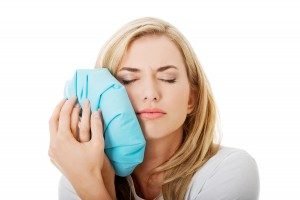Back in the 17th Century, wisdom teeth were named thus because they appeared in adulthood, therefore (theoretically) when one gained wisdom. This is a nice sentiment but you actually don’t need your wisdom teeth.
In fact, sometimes it can be detrimental to your health and when that happens, you need to extract at least one, if not all, of your wisdom teeth. Here’s your guide on what you should expect from a wisdom tooth extraction.

Why are They Removed?
Wisdom teeth may need to be removed for a variety of reasons. There may not be enough space in your mouth to accommodate all 32 teeth which could lead to crowding and bad occlusion (bite).
Your wisdom teeth also may not erupt properly. They could erupt at an angle, leading to impacted or partially impacted wisdom teeth. If it’s fully impacted, it could push against the adjacent molar, causing tooth pain and even irritation to your cheek and gums.

If it’s partially impacted, you may not be able to thoroughly clean the tooth (especially if there’s a flap of gum over part of the tooth). This can become a food trap and cause gum infection and tooth decay. It can even result in a jaw cyst or swollen lymph glands in extreme cases.
Your dentist will monitor your mouth throughout your adolescence and early adulthood. If there are no issues (like pain or difficulty opening your mouth), then no extraction is needed. If there is a problem, your dentist will take X-rays and then give you a proper diagnosis.

Location, Location, Location
There are several places you can get your teeth extracted. Your general dentist may be able to remove your wisdom teeth for you if the extraction is not too complicated. They’ll just use local anaesthetic and extract your tooth like any other tooth.
If your case is more complicated (like splayed roots), you may be referred to an oral surgeon who specialises in wisdom teeth extractions, or even the hospital, where they’ll perform the extraction under general anaesthetic (i.e. while you’re asleep).
Regardless, please make sure you let the dentist/surgeon know if you’re taking any blood thinning medication. This will greatly impact your extraction (as you may bleed a lot more than normal). Your dentist/surgeon may advise you to stop taking the medication before the extraction but speak to them for their ultimate recommendation.

Recovery
Wisdom teeth are generally large than most other teeth, even your other molars. Therefore, the hole left by the extraction may requires surgical sutures/stitches to ensure there’s no food that gets stuck in the hole while the gums heal.
Depending on the sutures, they could be dissolving or undissolving. If they don’t dissolve, then you’ll need to go back in to get them removed, probably a week or two after your extraction. In any case, your dentist/surgeon will advise you of any follow up appointments needed.

In the first hour:
You will come out of the dental surgery biting on a gauze pad to reduce bleeding. Bite on this gauze pad for 10 minutes. After 10 minutes, you can remove it. Removing the gauze may cause the blood clot formed to dislodge and this may cause a bit of blood to ooze. This is normal and you just have to spit that out.
Do not rinse as this would keep washing out the blood clot that you need to form in the socket for the healing process to begin. However, if the socket bleeds a lot (and that means blood is pumping out) after you remove the gauze pad, you can bite on a second one for another 10 minutes.

If you run out of gauze pads, you can bite on a moistened tea bag as the tannin in the tea helps with coagulation. Biting on a moistened gauze pad placed in the freezer for about 20 minutes can also help with slowing down the bleeding.
Take it easy for the rest of the day. Do not exert yourself and certainly do not run around the block!

In the first eight hours:
For the first eight hours, you can gently brush everywhere except the operated area (leave it for three days before you start brushing the area again). Within this time frame, the anaesthetic will wear off. Even with local anaesthetic, the medication is very powerful so when it wears off, you’ll bear the full brunt of the pain.
Counteract the force of the pain by regularly (i.e. every three to four hours) taking paracetamol or ibuprofen. Don’t wait for the painkillers to wear off before you take another dose as it will take longer for it to have effect and you’ll be left in pain for about an hour. Be careful not to chew your lip, cheeks or tongue while the surgical anaesthesia is still working. To avoid nausea, do not take pain relief on an empty stomach.

There will also probably be substantial swelling and (if you have your lower wisdom teeth removed) you may experience limited jaw opening. Apply an ice pack over the operated area for 15 minutes, then remove the ice pack for 15 minutes, and repeat this for the first day.
Rinse gently with warm saltwater after each meal to clean out any food that may have lodged in the socket. Do not open your mouth too widely as this will disrupt the healing process. If you find you have a runny nose, just dab or take an antihistamine to dry up your nose – don’t blow your nose as the force of blowing may hurt and may even dislodge the blood clot.

In the first 24 hours:
Do not disturb the area around the extracted tooth by biting, rinsing (except after meals), swishing, sucking, smoking or poking the area with your tongue, finger or other objects. The first 24 hours is when a blood clot forms. Any disturbance of the area will dislodge the clot, allowing the bleeding to continue.
Instead, chew on the opposite side of your mouth to avoid any food entering into the socket. If you got both of your top or both bottom wisdom teeth removed, eat towards the front of your mouth. And definitely avoid smoking (otherwise your rate of healing will significantly decrease and there is also a high chance of a dry socket forming).

Try to stick to a diet that doesn’t involve or involves very little chewing (like soups, mashed potato or any other soft foods). Don’t let the food settle in the back of your mouth. Drink as gently as possible (no swishing and no sucking through a straw).
You will probably not be feeling up to it anyway but avoid any strenuous activity in the first 24 hours. Take this as the perfect opportunity to rest and relax. The lower your blood pressure, the less you will bleed and the more the wound will heal.

After the first 24 hours:
You can gently rinse your mouth with a saltwater solution (a teaspoon of salt in a glass of warm water). This staves off any potential for infection forming in the socket. Do not use commercial mouthwashes as the chemicals may aggravate the wound.

In the first two days:
Change your diet to soft foods for the first two days. After this, you can go back to eating regular meals. (Of course, ensure you chew on the other side of your mouth/the front of your mouth.)
Drink heaps of water to help the healing process. Do not drink alcohol for the first two days (alcohol makes a particularly poor combination with medicines and painkillers).

In the first week:
If you were prescribed antibiotics, ensure that you finish the course even if your symptoms have gone. Keep rinsing with the saltwater solution after every meal and before bed in the first week.
Be aware of your body. Do not hesitate to contact your dentist if you experience:
- Uncontrollable pain;
- Excessive bleeding or swelling; or
- Any other issues that concern you.

